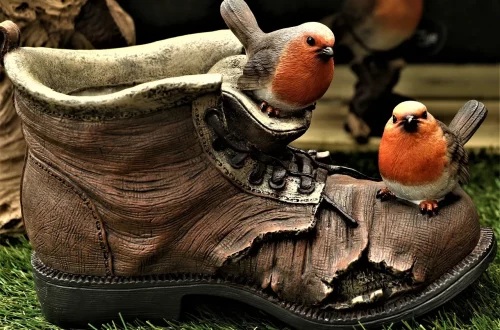
Effective Dog Spray Solutions to Keep Flies Away
Keeping a pet dog is one of life’s great joys, but it can also come with its own set of challenges. One common nuisance that dog owners face is the presence of flies, particularly during warmer months. Flies are not only irritating for both dogs and their owners, but they can also pose health risks. These pests can carry diseases that affect both pets and humans, making it crucial to find effective ways to keep them at bay.
Many dog owners are often on the lookout for solutions that are safe, natural, and effective. While there are commercial products available, homemade sprays can offer a cost-effective and environmentally friendly alternative. Understanding how to create and use these sprays can enhance the quality of life for both dogs and their owners.
In this article, we will explore various dog spray solutions designed to keep flies away, highlighting the effectiveness of natural ingredients, the benefits of regular maintenance, and how to create your own fly-repellent sprays at home.
Understanding Fly Behavior and Attraction
Before diving into the solutions for keeping flies away, it’s essential to understand why these pests are attracted to your dog in the first place. Flies are drawn to organic matter, including food, waste, and even the natural oils in your dog’s coat. They are particularly attracted to areas where dogs spend time, such as yards, parks, and even inside the home if there are open food sources.
Flies reproduce rapidly, and a small infestation can quickly spiral out of control. The warm, humid conditions of summer provide a perfect breeding ground for these pests. It’s crucial to maintain cleanliness in your dog’s environment to prevent attracting flies. This includes regularly cleaning up waste, not leaving food outside, and ensuring that your dog’s living area is tidy and dry.
Moreover, certain dog breeds may be more prone to attracting flies due to their fur type and skin conditions. For instance, dogs with longer hair or those that sweat more might have more flies hovering around them. Understanding these behaviors can help dog owners take proactive steps to minimize fly attraction.
Incorporating fly prevention methods into your dog care routine is essential. While sprays can be effective, they should be part of a holistic approach that includes cleanliness, grooming, and potentially dietary adjustments to reduce odors that attract flies.
Homemade Fly Repellent Sprays
Creating your own fly repellent spray can be a simple and effective way to keep flies at bay. Many commercial products contain harsh chemicals that can be harmful to your dog and the environment. By using natural ingredients, you can create a spray that is both safe and effective.
One popular recipe includes using essential oils known for their insect-repelling properties. For instance, oils like lavender, peppermint, eucalyptus, and citronella can be mixed with a carrier oil, such as coconut or olive oil, to create a soothing spray. To make this spray, combine 10-15 drops of your chosen essential oil with two tablespoons of carrier oil, and fill the rest of a spray bottle with water. Shake well before each use, and spray it on your dog’s coat, avoiding the eyes and nose.
Another effective natural remedy involves vinegar, particularly apple cider vinegar. Flies dislike the strong scent of vinegar, making it an excellent deterrent. To create a vinegar spray, mix equal parts of water and apple cider vinegar in a spray bottle. You can also add a few drops of dish soap to help the mixture adhere better to your dog’s coat. Spray this solution on your dog before walks or outdoor playtime.
It’s essential to test any homemade spray on a small area of your dog’s skin first to ensure there are no allergic reactions. Additionally, while these sprays can help repel flies, they are not a substitute for regular grooming and cleaning. Keeping your dog’s coat clean and free from debris will further reduce the chances of attracting flies.
Maintaining a Fly-Free Environment
While sprays can help keep flies away from your dog, maintaining a fly-free environment is crucial for long-term success. This involves several proactive measures that every dog owner should adopt.
First and foremost, regular cleaning is essential. This includes picking up after your dog immediately, cleaning food and water bowls regularly, and ensuring that any waste is disposed of properly. If your dog spends time in a yard, consider using barriers such as fences or nets to keep flies at bay. Additionally, placing fly traps around the perimeter of your yard can help catch any pesky flies before they get too close to your dog.
Another critical factor is proper grooming. Regularly brushing your dog can help remove loose fur and debris that may attract flies. Bathing your dog with natural, fly-repelling shampoos can also be beneficial. Ingredients like neem oil and citronella are known to repel insects and can be found in various dog shampoos.
Furthermore, consider using fly deterrents in your outdoor space. Planting herbs such as basil, rosemary, and mint around your yard can help repel flies naturally. These plants not only keep flies away but can also enhance your garden’s overall aesthetic.
Lastly, ensure your dog is healthy and free from skin irritations or infections, as these can attract flies. Regular veterinary check-ups are essential for maintaining your dog’s health and preventing any conditions that may invite unwanted pests.
Using Commercial Fly Repellent Products
While homemade solutions are effective, some dog owners may prefer the convenience and targeted effectiveness of commercial fly repellent products. These products come in various forms, including sprays, wipes, and powders, and are specifically formulated to repel flies and other pests.
When choosing a commercial product, it is essential to read the labels carefully. Opt for products that contain natural ingredients rather than harsh chemicals. Many brands now offer eco-friendly options that are safe for pets and the environment. These products often include essential oils and other natural extracts known for their insect-repelling properties.
Before applying any commercial product, always follow the manufacturer’s instructions. Apply the spray evenly over your dog’s coat, avoiding sensitive areas like the face and paws. Some products may require reapplication after a certain period or after your dog has been in water, so be mindful of these details to ensure maximum effectiveness.
Additionally, consider using fly traps in conjunction with topical repellents. These traps can be placed strategically around your home and yard to catch flies before they get to your dog. This dual approach can significantly reduce the fly population in your vicinity.
While commercial products can be effective, they should not replace good hygiene practices and regular care. Keeping your dog clean and maintaining a tidy environment will always be the best defense against flies.
In conclusion, keeping flies away from your dog requires a multifaceted approach that includes cleanliness, grooming, and effective use of sprays, whether homemade or commercial. By understanding fly behavior and implementing these strategies, you can create a comfortable, fly-free environment for your beloved pet.
*Disclaimer: This article is for informational purposes only and does not constitute medical advice. If you have any health concerns regarding your pet, please consult a qualified veterinarian.*




